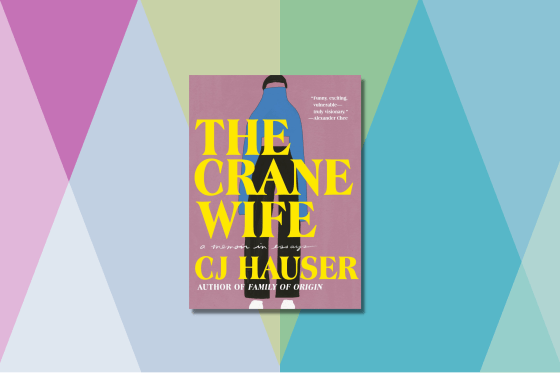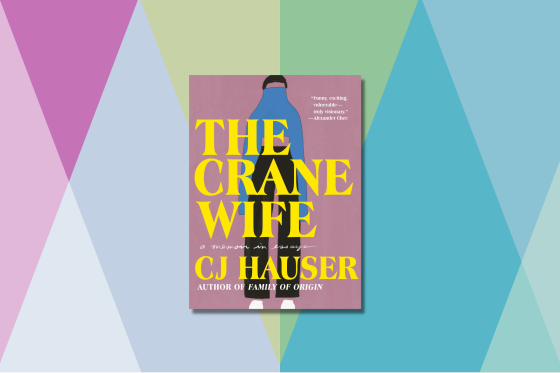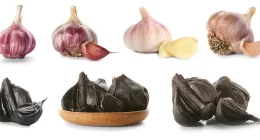CJ Hauser has one of those faces. She just looks like someone you could talk to—and strangers tend to do exactly that, stopping her on the street or unloading their life stories on her on airplanes. It only adds to the phenomenon when, the day we meet in Brooklyn’s Prospect Park, Hauser brings along her 6-year-old Bernese Mountain dog, a gentle giant named Moriarty. Within minutes of setting foot into the park, a man approaches Hauser to tell her about the time he was attacked by a dog, and how the bright orange of Moriarty’s harness reminded him of his trauma. Later, while we’re sitting on the grass, a woman stops and shares the story of how she came to adopt her mutt. Hauser laughs off these interruptions, a part of her daily reality with and without the dog. “I thought this was a thing in everyone’s life until a friend was like, ‘You realize this is weird, right?’” she says.
Hauser’s comfort with oversharing goes both ways. This is the person who wrote an unassuming Paris Review essay so potent that it went viral. “The Crane Wife,” published online in July 2019, told the story of Hauser’s experience traveling to the gulf coast of Texas to study whooping cranes 10 days after calling off her wedding, and why she chose to end that engagement. The piece exploded on Twitter and was read by more than a million people.
Now, the 38-year-old author and college writing professor is set to publish her debut essay collection, named for her viral piece, on July 12. The Crane Wife, which includes seven previously published essays and 10 brand-new ones, explores Hauser’s shifting perspective on love, in all its forms, as she dissects her most meaningful relationships. If self-exposure and confessional writing is ubiquitous these days, what sets Hauser’s storytelling apart is her ability to harness universal questions about love and the stories we tell ourselves and filter them, devastatingly, through specific, visceral moments from her own life. She drills under her own skin, excavating emotions that are still, even in 2022, hard to talk about. “There are a lot of feelings in here,” she says, gesturing to herself. “It’s true of us all. My relationship to what to do with those, whether to feel them or shove them away, who to share them with, whether to share them at all—that was the thing that made me feel good or bad about myself, the thing that has fluctuated over time.” After growing up in small-town Connecticut, in a family and a culture she says were not open to discussing the bitter or challenging parts of life, she is firmly in her sharing era: “I find it very soothing to put stuff on the table.”
In The Crane Wife, there is a lot of putting stuff on the table. In one piece, Hauser unearths the memory of a college relationship with her friend, a young woman, which turned romantic in secret. She writes, “I am not an officially elected delegate of bi-kids-who-were-not-yet-out-in-college-who-messed-you-around, but I will offer a statement on our behalf to whoever needs to hear it anyway: That was so, so f-cked up of us. We are so, so sorry.”
She also reflects on the angst and sorrow of being tapped to spread her grandparents’ ashes in Martha’s Vineyard, dives deep into why she’s considered having breast-reduction surgery, and, in three parts, unfolds the painful, turbulent story of her bond with her first boyfriend, who, over several years, moved in and out of her life and struggled with his sobriety. It was that relationship that Hauser found particularly difficult to put to paper—she remembered how much it hurt when they were together, and writing about him meant revisiting a specific, punctuating heartbreak. Still, throughout the collection, Hauser demonstrates that she’s unafraid to go there, especially as she sorts through the wrenching details of memories associated with lust, loss, and longing.

Hauser spent most of her life obsessively following fictional relationships as they played out on the page, screen, and stage. She’s seen all 11 seasons of The X-Files at least four times all the way through—not just because she’s into the mysteries, but more so because she can’t get enough of Mulder and Scully, her favorite onscreen couple. And she’s deeply attached to The Fantasticks, the star-crossed-lovers musical she once saw with her first boyfriend. So, naturally, she positioned herself as a fiction writer, publishing the domestic novel The From-Aways in 2014 and climate-meets-family narrative Family of Origin in 2019. Both were well received, if somewhat quietly—nothing like the impact of “The Crane Wife.”
Read More: 27 New Books You Need to Read This Summer
Hauser says she hesitated to capitalize on the success of that piece. “I was very stubborn about not wanting to write more nonfiction after that,” she says, “because everyone said they liked it better than the thing I spent five years working on.” But nonfiction is where her writing career technically began. When Hauser was an undergrad at Georgetown, the university offered only one creative writing class. She applied every year, sending in fiction samples only to be rejected. Her senior year, the year she finally got in, Hauser turned in a handful of real letters she’d written to her ex-boyfriend with the application. “I called it an epistolary story,” she says with a shrug. There was something there—something about the way she wrote what’s true.
Any author who claims to be put off by literary fame is lying, but for Hauser, the visibility she gained by going viral did come with a sobering side effect. She was startled to learn how many people related to her story about sacrificing her own needs for “love.” She did not expect that writing about one of the most shameful experiences in her life, allowing herself to be so minimized, would result in thousands of strangers on the internet saying they’d felt the same way. “If it’s just one person full of feelings in a bad situation, that’s an anecdote. But if it’s a bazillion people, what’s going on?” she says. “I’m worried about us.”
Sign up for More to the Story, TIME’s weekly entertainment newsletter, to get the context you need for the pop culture you love.
The piece was never meant to be a hit. She pitched it to raise some modest awareness of Family of Origin, which she was promoting at the time. That it was able to break through the oversaturated content landscape was a feat. Hauser attributes her moment in the spotlight to our modern conception of shared art. Placing a hand on Moriarty’s side, she dons her figurative professor hat. The canon, she explains, is being disassembled. Most writers have been left out of it for too long. The world is pushing back against the concept of the classics—those works deemed important by legacy power structures. So we fill that void with our own references; we can connect over “Bad Art Friend” or an essay about personal needs and whooping cranes. And it’s especially meaningful when shared art, like “The Crane Wife,” can put to words a notion that so many have struggled to articulate, let alone fulfill: that you should never have to become less of yourself in order to be deserving of someone’s love.
It’s been three years since Hauser published the piece, and she’s quick to disclose that she’s still struggling when it comes to romance. “Someone suggested I do a love advice column,” she scoffs. “I was like, have you read this? I’m so bad at that.” But, even if it doesn’t contain a traditional “and they lived happily ever after” ending, her new collection presents a person who seems pretty confident in her understanding of what love can look like—and all the diverse shapes it should be allowed to take.
As we gather our things to leave, Hauser and Moriarty charting their course to the dog beach at the center of the park, she notices a gaggle of preteens running around with foam swords. They’re stabbing each other, cackling, dashing between the trees. Hauser asks an adult counselor what’s happening. We’re told it’s a Percy Jackson–themed summer camp. She turns to me, elated to have found another example of shared art, which, she affirms, is all around. Then, she turns to the counselor: “Do you have room for someone in their 30s?”
This post first appeared on Time.com








